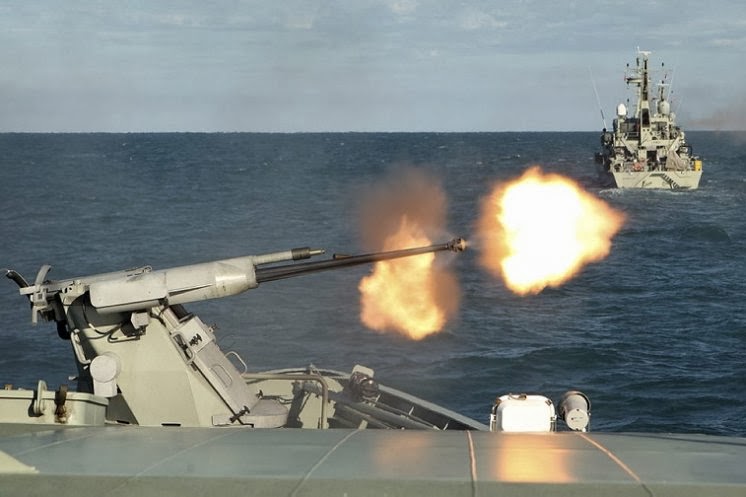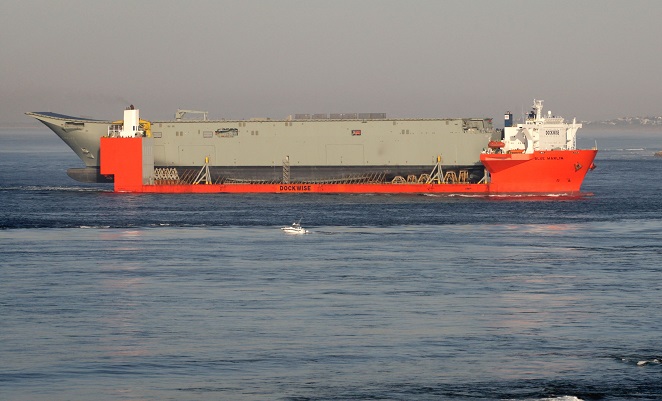Another exciting project milestone for NUSHIP Canberra has been achieved with the installation of four Typhoon stabilised weapons systems onboard.
For weapon enthusiasts, this advanced weapons system includes a 25 mm M242 Bushmaster chain gun and a coaxially mounted M240 7.62mm machine gun. For those not so conversant with weapons systems, the Typhoon is a large gun with a rapid rate of fire.
Canberra’s Gunnery Officer, Lieutenant Adam Simeoni, helped to explain the size and scale of the weapon.
“The typhoon is smaller than the main gun you see on a Guided Missile Frigate, but it has a much higher rate of fire. While higher rates of fire are usually associated with small ‘person-operated’ automatic machine guns, the Typhoon has a much larger round,” said Lieutenant Simeoni.
“Basically, this means the Typhoon has a high rate of fire and decent sized rounds. This combination provides Canberra with a very effective and potent force protection weapons system, specifically suited to the requirements of the LHD platform,’ he said.
The Typhoon has a rate of fire of up to 180 rounds a minute and can be operated from the Operations Room via the Combat Management System (SAAB 9LV Mk4) or from the independent remote operating consoles, also located in the Operations Room.
The weapons have also been mounted in such a way to cover a 360 degree arc of fire around the platform. Two are mounted forward with one located on the starboard gun deck and the other on the port gun sponson. The aft mounts are located on either side of the quarterdeck, just behind and below the flight deck.
“When operated through the Combat Management System, the Typhoon provides an increased level of functionality that boosts its effectiveness as an all-round force protection defence system featuring capabilities not before seen in the RAN,” said Lieutenant Simeoni.
The Typhoon will be operated by both Boatswains Mates and Combat System Operators, depending on the mode of operation. A team of three Electronic Technician (Weapons) personnel will maintain the guns.
“The operators and maintainers have all completed the courses on how to maintain and operate the weapons system and are raring to go,” said Lieutenant Simeoni.
“We are all looking forward to testing and operating the system during First of Class Trials at sea next year” he said.




